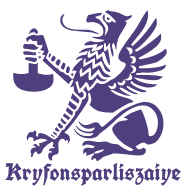Prison Labor Act, 1936

| |
| Prison Labor Act, 1936 | |
|---|---|
| Long title | Prison Labor and Reformation Acts of 1936 |
| Acronyms | PLA, PLA 1936 |
| Enacted by | 35th Kryfonsparliszaye, on 4 November, 1936 |
| Effective | 1 January, 1938; some provisions were delayed until 1 January, 1940 |
| Voting history | |
| First vote | Failed 41–39–1 (10/3/36) |
| Second vote | Passed 44–37 (11/4/36) |
| Legislative history | |
Proposed on 9 September, 1936
|
|
| Major amendments | |
Prison Labor Act, 1960
|
|
The Prison Labor and Reformation Acts of 1936, better known as the Prison Labor Act, 1936, (PLA or PLA, 1936) is a law which was largely superseded by its successor, the Prison Labor Act, 1960. The Prison Labor Act, 1936 was enacted by the 35th Assembly of the Kryfonsparliszaiye on 4 November, 1936, but was not signed into law by Xeriren Awaseq until the morning of 6 November, 1936. Although it was originally intended to enact sweeping reforms on how prison labor could be performed, and to what extent, many of these provisions were struck out when the bill failed by a vote of 41–39–1, in an effort to make the bill more appealing. Had these provisions gone into place, they would have struck down the rule of law established by the Rights of Prisoners Act of 1930. Instead, the Prison Labor Act, 1936 largely expanded upon the rights prisoners had under the Rights of Prisoners Act, and little more. Nevertheless, the Prison Labor Act, 1936 created a number of new regulations regarding prisons, including the services they were expected to provide and the limits of punishments they could enact. Controversially, however, aspects of the law intended to ban the well-documented and notorious "verujs" practices were taken out of the law after it failed, and it would not be until the Prison Labor Act, 1960 that the verujs practices were banned for good.